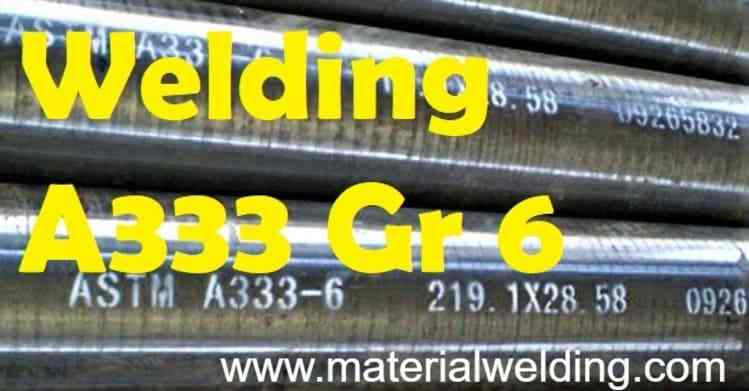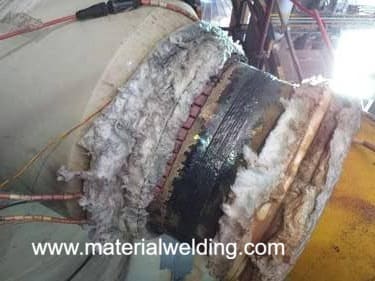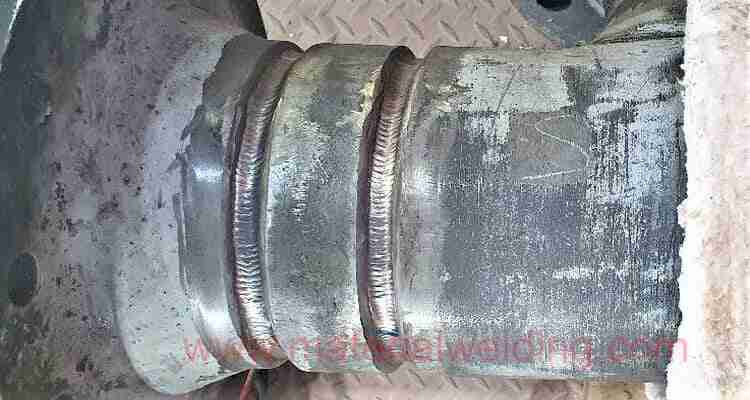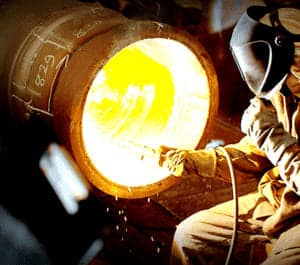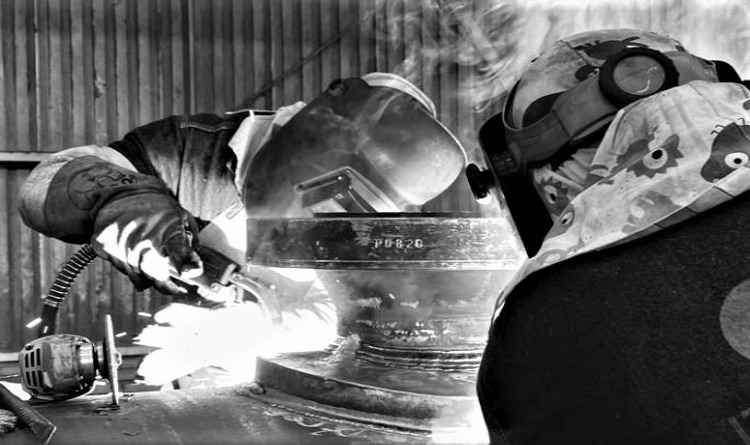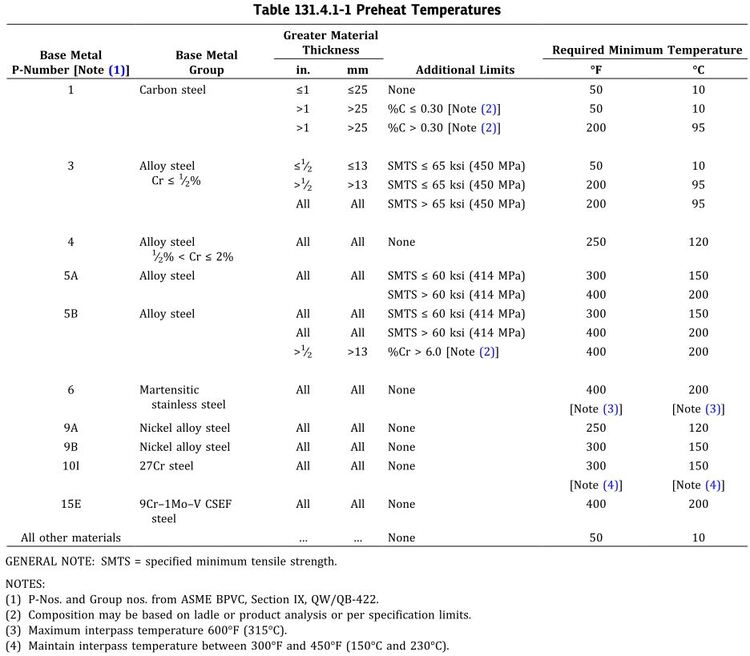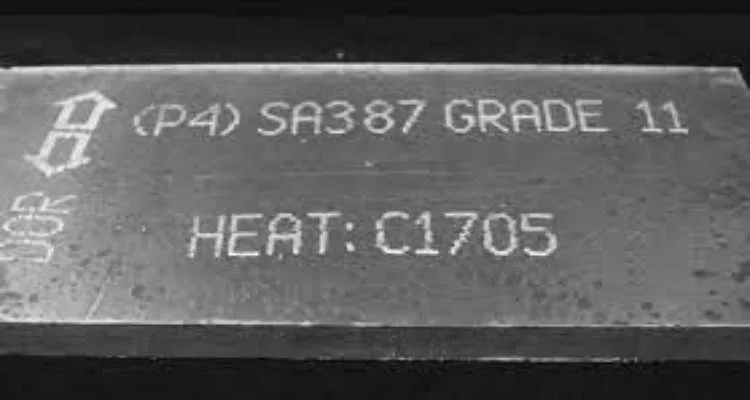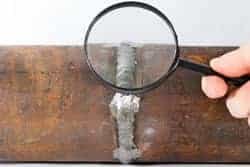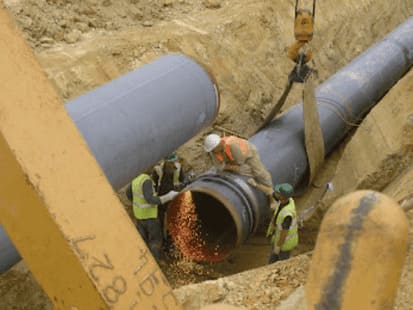P91 (9Cr-1Mo-V) Steels
P91 steel is a type of high-temperature, low-alloy steel that is widely used in various industries, particularly in power generation plants and petrochemical refineries.
ASME Grade P91, also referred to as 9Cr-1Mo-V alloy steel piping, is currently used for piping, headers, and tubes. This material is categorized as P-No. 15-E in ASME BPVC Section IX.
Welding P91 (9Cr-1Mo-V) Steels
Welding P91 (9Cr-1Mo-V) steels requires careful consideration and adherence to specific procedures to ensure the integrity and performance of the weld joints.
P91 Welding can be carried out using Flux-cored arc welding (FCAW), gas metal arc welding (GMAW), gas tungsten arc welding (GTAW), submerged arc welding (SAW), and shielded metal arc welding (SMAW). However, other welding processes may be proposed to the purchaser for approval.
When using gas metal arc welding with a short-circuiting transfer mode (GMAW-S) for the root pass, the approval of the purchaser is required. If GMAW-S is chosen, the filler wire used must have a minimum silicon (Si) content of 0.35%.
Pre-Weld Preparation for P91 Welding
Proper pre-weld preparation is crucial for successful welding. This includes cleaning the base metal to remove any contaminants, such as oil, grease, or rust, that could affect the quality of the weld. Additionally, the joint surfaces should be properly beveled or prepared according to the welding procedure specifications.
Preheat and Interpass Temperature for P91 Welding
The minimum recommended preheat temperature should adhere to the requirements specified in the applicable codes. Currently, ASME B31.1 and ASME B31.3 standards mandate a minimum preheat temperature of 400 °F. ASME BPVC Section VIII treats preheat temperature requirements as nonmandatory, but it recommends a preheat temperature of 400 °F.
However, recent research, such as referenced in EPRI 3002018025—2.6.1, has indicated that the following preheat temperature guidelines have been deemed acceptable for steam services:
a) For any process, if the thickness exceeds 0.5 in. (12.7 mm), the minimum preheat temperature should be 400 °F (205 °C).
b) For welds made using either the gas metal arc welding (GMAW) process or the gas tungsten arc welding (GTAW) process with a solid wire filler metal, the minimum preheat temperature should be 300 °F (150 °C).
c) For welds made using the shielded metal arc welding (SMAW) process, the minimum preheat temperature should be 350 °F (175 °C).
d) For welds made using the flux-cored arc welding (FCAW) process, the submerged arc welding (SAW) process, or for highly restrained components, the minimum preheat temperature should be 400 °F (205 °C).
The maximum interpass temperature should not exceed 600 °F (316 °C) during welding.
After completing any post-weld heat treatment (DHT), the weldments should be cooled to below 200 °F (93 °C) before undergoing further PWHT. It’s important to note that 200 °F (93 °C) represents the martensite finish temperature (Mf).
P91 Steel Post-weld Heat Treatment
Post-weld heat treatment (PWHT) is crucial for P91 steels to relieve residual stresses and enhance the material’s properties. The specific PWHT parameters, including temperature and duration, should be in accordance with the approved welding procedure to ensure the desired microstructure and mechanical properties of the weld joint. The following guidelines apply to post-weld heat treatment (PWHT):
- The PWHT temperature and holding time are critical variables and should be within the limits of ± 25 °F (± 14 °C) and ± 1 hour, respectively.
- The PWHT temperature should be conducted in accordance with the relevant code requirements.
- Prior to PWHT, welds should be cooled to a temperature below the martensite finish temperature.
- The maximum allowable PWHT temperature should not exceed 1420 °F (770 °C).
- The PWHT holding time should be 2 hours per inch (25 mm) of thickness, with a minimum of 2 hours.
- The heating and cooling rate should not exceed 200 °F/hr (110 °C/hr) per inch of thickness.
- It is recommended to follow ASME BPVC Section I Appendix, specifically “Nonmandatory Appendix C Local Heating of Welds in Cylindrical Components of P-No.15E Materials When Using Electric Resistance Heating.”
Welding Electrode & Filler wire for P91 Steel Welding
The selection of appropriate filler material is critical for welding P91 steels. Low-alloy, high-strength filler metals with similar composition to the base material, such as E9015-B9 or E9018-B9 electrodes, are commonly used. The filler metal should be compatible with the base material and meet the requirements of the applicable welding codes and specifications.
The requirements specified are as follows:
- SMAW electrodes must be certified to the H4 designation. However, in certain geographic areas, the H5 designation may also be considered acceptable. H4 signifies 4 milliliters of diffusible hydrogen per 100 grams of weld deposit, while H5 signifies 5 grams of diffusible hydrogen per 100 grams of weld deposit. In cases where H5 is deemed acceptable, the purchaser should request a Procedure Qualification Record (PQR) or other evidence to demonstrate its acceptability.
- During the procedure qualification process, in addition to complying with relevant code requirements, weld deposits for submerged arc welding (SAW) or flux-cored arc welding (FCAW) must undergo impact testing for each lot number of flux for SAW or heat number of filler metal for both SAW and FCAW. The acceptance criterion is an average impact strength of 20 ft-lb (27.1 J) with no value falling below 16 ft-lb (21.7 J) at 70 °F (21 °C). However, in cases where impact testing is not required by the code, such as in steam or power applications, the owner/operator may choose to waive this requirement.
- A basic flux should be utilized for SAW in P91 piping. The B31.3 code mandates a minimum basicity index of 1.0 for the flux. However, the owner/operator or purchaser has the option to specify a higher basicity index if desired.
- Rutile flux is permitted for FCAW, provided it can demonstrate adequate toughness.
- Electrodes from packaging that has been punctured or torn should be dried according to the recommendations of the electrode manufacturer, or they should not be used for welding that requires consumables with an H4 diffusible hydrogen classification.
- For FCAW, if welding is interrupted, the manufacturer’s recommendations should be followed to determine whether the filler wire needs to be discarded.
- In the manual gas tungsten arc welding (GTAW) process, the diameter of the filler material must not exceed 3.2 mm (0.125 in.).
- For welding consumables of P-15E (9Cr-1Mo-V) material, the combined nickel and manganese content should not exceed 1.20%.
It is crucial to refer to the specific standards, codes, and guidelines applicable to the project to ensure compliance with the requirements outlined above.
Post-Weld Inspection and Testing
After completing the weld, it is important to conduct thorough inspection and testing to assess the quality and integrity of the weld joint. Non-destructive testing methods, such as ultrasonic testing or radiographic examination, may be employed to detect any potential defects or discontinuities.
Compliance with Codes and Standards
Welding P91 steels should be carried out in accordance with the relevant codes and standards, such as ASME BPVC Section IX, AWS D10.10, or EN 1011-2. It is essential to follow the recommended procedures, guidelines, and specifications specified in these documents to ensure compliance and optimal weld quality.
Conclusion
Given the unique properties of P91 steels, it is recommended to consult with qualified welding engineers and professionals experienced in welding this material. They can provide specific guidance and assistance in developing suitable welding procedures and ensuring the successful welding of P91 steels.
